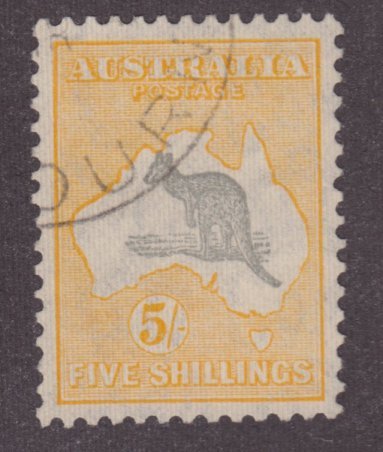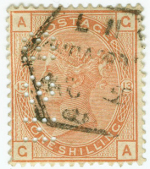
Discussion - Member to Member Sales - Research Center

Discussion - Member to Member Sales - Research Center



Login to Like
this post
Actually that was the first stamp to be tagged, August 1, 1963. The first regular postage stamp to be tagged was Scott #1238, City Mail Delivery issue, on October 26, 1963.

Login to Like
this post
The below article from U.S. Postal Bulletin, Volume 84, Issue 20372 (18Jul1963) provides background information on the experimental use of luminescent tagging.
Steve


Login to Like
this post
I don't have a lot of FDCs, but kept this one from ArtCraft for the illustration:

The FDC shows the Pitney-Bowes Mark II Facer Canceller machine. The major advancement about prior equipment was that it made obsolete the step of first manually turning and organizing all envelops such that the stamp was in the same position before the stack of envelopes could be fed into the cancelling machine.
The first facer canceller, the "Mark I," tried out in 1957, was actually a Dutch machine manufactured by Verkspoor N.V. of Holland, but because of the Postal Department's concern about contracting with a foreign company, Verkspoor collaborated with Pitney-Bowes (they also did that for their more famous invention, the Transorma). The American made "Mark II" was essentially two Mark I's operating in tandem. That is what you see in the picture -- two cancelling machines in a line. The POD placed an inital order of twenty-five facer cancellers. Each Mark II has four cancellers and the first installation cities Washington, DC, Philadelphia, and Detroit each received two machines, plus a single unit was placed in Stamford, CT (home of Pitney-Bowes). Hence, twenty five cancellers. EKU of these first couple of prototype Mark IIs, which can be identified by their unique cancelling impressions, is Washington, DC May 5, 1958.

Now, if anyone has an interest in how exactly the machine worked, why you wanted to have two in a row, etc., I can elaborate on it, but don't have to bore anyone. The reason why I have been writing this all up thus far, is actually only to make one point: the installation of the first facer-cancellers preceeded the issuance of the first taggged stamps by more than four years! The very common urban legend that tagged stamps were introduced to enable automatic facing and cancelling of mail matter, therefore is not entirely correct. And from Steve's newspaper clip we also learn that Dayton had a Mark II machine before the introduction of the tagged 8c Air Mail.
The answer is that all Mark IIs here to date used optical scanners, whereas in the Dayton trials an electronic scanning mechanism was tested. Because only the scanning mechanism was changed there is no observable difference in the machine markings. To bad, because if it is for the Mark IIs, or all earlier and later developments in postal mechanization, specialist always seek documentation of the evolution of the postal system. For instance, but I have to end it here, even though it is known that the POD conducted tests with the Mark I in Washington DC in 1957, I am not aware that any covers from these test runs have survived. Such a cover would be a wonderful find in a dollar box.
Arno

Login to Like
this post
Hi Steve and Arno - it started with a bud and ended up looking and smelling like a flower in full bloom! Thanks for posting such interesting information, now I have learned something new by just posting an image of a cover. Would certainly like to hear more about this especially about the red and green taggant segregation by these machines.

Login to Like
this post
Very interesting indeed.
Just want to put in my two cents: The Dutch company that built the cancellers was not "Verkspoor, but "Werkspoor".
Peter

Login to Like
this post

Another new acquisition for my airmail collection is this cover postmarked Dayton, Ohio 'First Day of use Luminiscent Tagging'. I am sure this applies to Airmail stamps 'red taggant' only.


Login to Like
this post

re: First Day of Luminescent Tagging; Pitney Bowes Mark II facer-canceller machines
Actually that was the first stamp to be tagged, August 1, 1963. The first regular postage stamp to be tagged was Scott #1238, City Mail Delivery issue, on October 26, 1963.

Login to Like
this post

re: First Day of Luminescent Tagging; Pitney Bowes Mark II facer-canceller machines
The below article from U.S. Postal Bulletin, Volume 84, Issue 20372 (18Jul1963) provides background information on the experimental use of luminescent tagging.
Steve


Login to Like
this post

re: First Day of Luminescent Tagging; Pitney Bowes Mark II facer-canceller machines
I don't have a lot of FDCs, but kept this one from ArtCraft for the illustration:

The FDC shows the Pitney-Bowes Mark II Facer Canceller machine. The major advancement about prior equipment was that it made obsolete the step of first manually turning and organizing all envelops such that the stamp was in the same position before the stack of envelopes could be fed into the cancelling machine.
The first facer canceller, the "Mark I," tried out in 1957, was actually a Dutch machine manufactured by Verkspoor N.V. of Holland, but because of the Postal Department's concern about contracting with a foreign company, Verkspoor collaborated with Pitney-Bowes (they also did that for their more famous invention, the Transorma). The American made "Mark II" was essentially two Mark I's operating in tandem. That is what you see in the picture -- two cancelling machines in a line. The POD placed an inital order of twenty-five facer cancellers. Each Mark II has four cancellers and the first installation cities Washington, DC, Philadelphia, and Detroit each received two machines, plus a single unit was placed in Stamford, CT (home of Pitney-Bowes). Hence, twenty five cancellers. EKU of these first couple of prototype Mark IIs, which can be identified by their unique cancelling impressions, is Washington, DC May 5, 1958.

Now, if anyone has an interest in how exactly the machine worked, why you wanted to have two in a row, etc., I can elaborate on it, but don't have to bore anyone. The reason why I have been writing this all up thus far, is actually only to make one point: the installation of the first facer-cancellers preceeded the issuance of the first taggged stamps by more than four years! The very common urban legend that tagged stamps were introduced to enable automatic facing and cancelling of mail matter, therefore is not entirely correct. And from Steve's newspaper clip we also learn that Dayton had a Mark II machine before the introduction of the tagged 8c Air Mail.
The answer is that all Mark IIs here to date used optical scanners, whereas in the Dayton trials an electronic scanning mechanism was tested. Because only the scanning mechanism was changed there is no observable difference in the machine markings. To bad, because if it is for the Mark IIs, or all earlier and later developments in postal mechanization, specialist always seek documentation of the evolution of the postal system. For instance, but I have to end it here, even though it is known that the POD conducted tests with the Mark I in Washington DC in 1957, I am not aware that any covers from these test runs have survived. Such a cover would be a wonderful find in a dollar box.
Arno

Login to Like
this post

re: First Day of Luminescent Tagging; Pitney Bowes Mark II facer-canceller machines
Hi Steve and Arno - it started with a bud and ended up looking and smelling like a flower in full bloom! Thanks for posting such interesting information, now I have learned something new by just posting an image of a cover. Would certainly like to hear more about this especially about the red and green taggant segregation by these machines.

Login to Like
this post
10:39:32am
re: First Day of Luminescent Tagging; Pitney Bowes Mark II facer-canceller machines
Very interesting indeed.
Just want to put in my two cents: The Dutch company that built the cancellers was not "Verkspoor, but "Werkspoor".
Peter

Login to Like
this post

